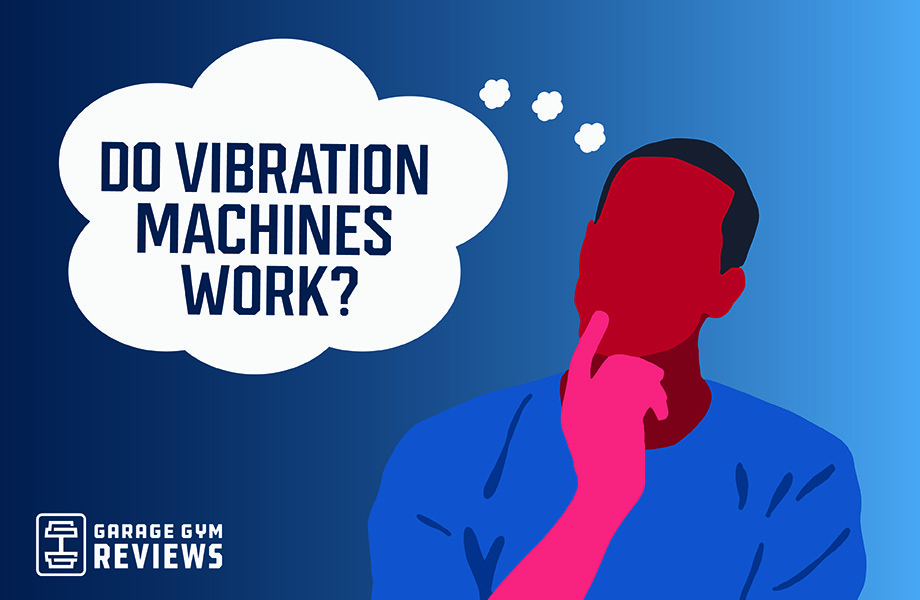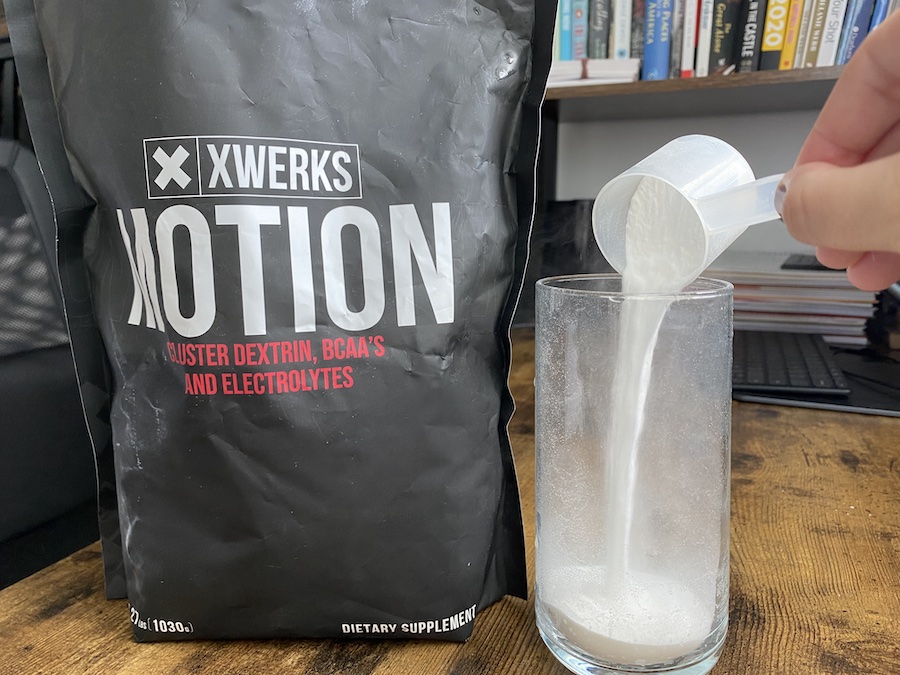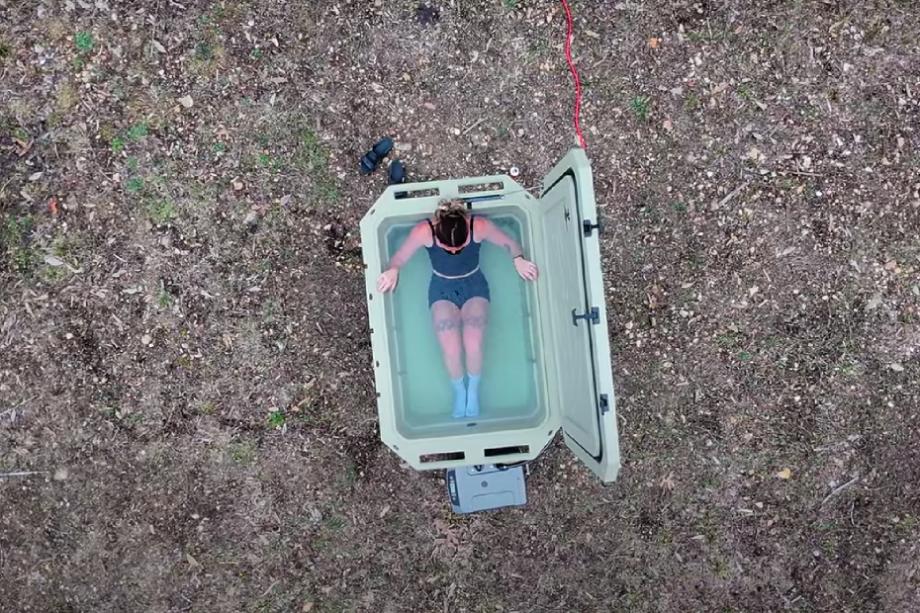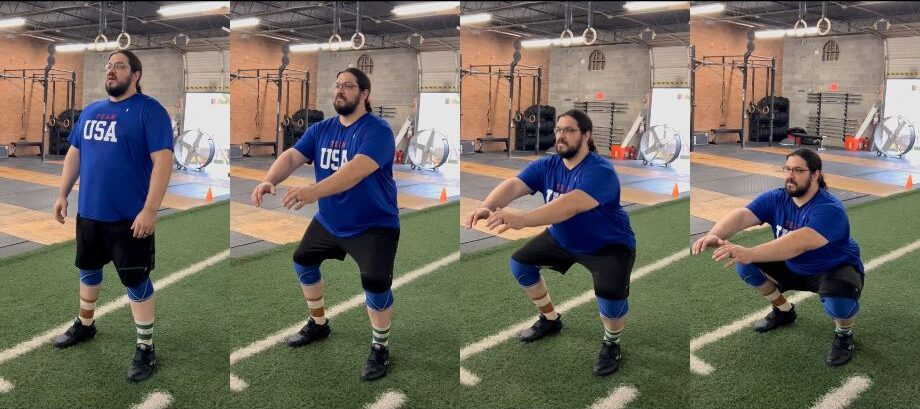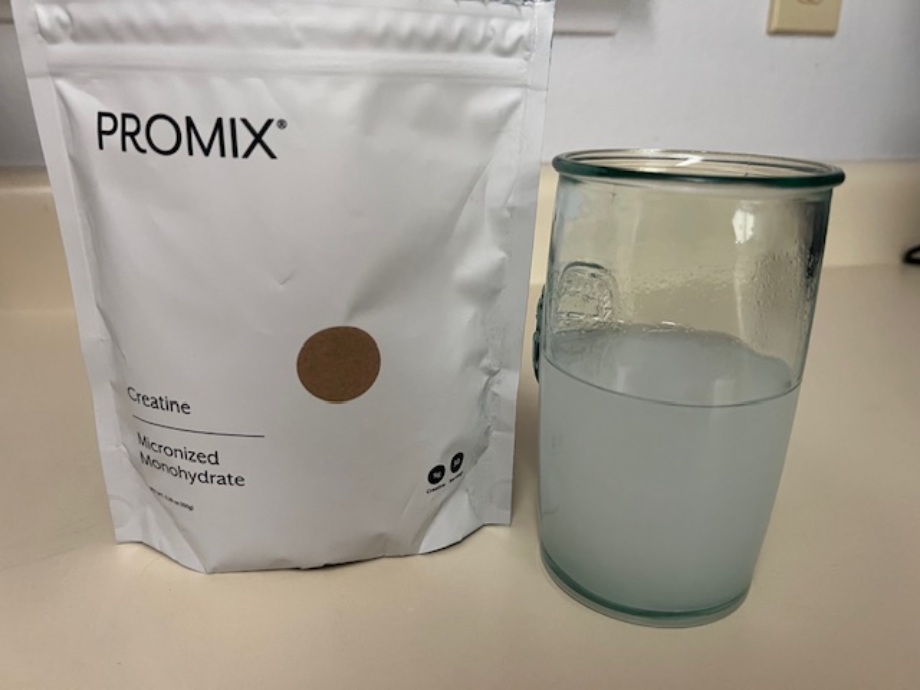Wouldn’t it be cool if you could stand on top of a platform that would shake the weight off of you? If something like that existed, people would stand in line for miles to try it out! But wait, the word on the exercise streets says this might already be possible using vibration machines.
Now listen: I know this sounds way too good to be true, but I like to give everything a fair chance before completely dismissing it. Therefore, go on this journey with me as I answer the question: Do vibration machines work?
I’ll explore if there’s any science out there confirming that vibration therapy has any associated health benefits or helps build muscle strength. So, c’mon! Keep reading to see if vibration machines are a hit or a miss.
Wait, What’s a Vibration Platform?
Before I can explore the science behind vibration machines, it’s necessary that I shed some light on what this thing even is. After all, I’m sure some of you are side-eyeing this post because it does sound a bit out of this world. But bare with me here.
Vibration machines are quite simple as they only include a metal frame with a vibrating plate on top. Many have remotes that come with them, so you can change the amount of vibration to whatever you prefer. In addition, some of them have handlebars that you can hold on to while you get your shake on.
There are three main types of vibration: linear, tri-plane, pivotal, and sonic. Vibration machines are all similar in that they come with a metal frame and a vibration plate, but they can use different types of vibration. This is important, and we’ll jump into the differences now.
The Linear Vibration Platform
Linear vibration machines move vertically (up and down). I compare the feeling of it to an elevator attempting to lift up quickly but struggling to do so, so it jerks around. I suppose it’s trying to mimic the body’s jump reflexes, but the movement isn’t natural or that comfortable. Some people even report feeling sick to their stomachs or dizzy because they can feel the vibration move up through their upper body and to their heads.
Some professional athletes, particularly those who play sports where jumping is important, may use this type of platform. The higher vibration frequencies paired with the lower amplitudes may help the leg muscles contract quickly, resulting in larger, stronger muscles.
The Tri-Plane Vibration Platform
In this type of vibration machine, the vibrations move across three planes: forward and back, side to side, and up and down. They’re fairly similar to linear vibration platforms.
And similarly to them, because these plates move in three planes of motion, they’re often more intense and can create more muscle contraction. These are the type of vibration platforms that are often seen in gyms and used for sports training.
The Pivotal (AKA Oscillating) Vibration Platform
When most people think of vibrational platforms, they’re thinking of this one, as it’s one of the most popular for home use. Users can stand or sit on it while the right and left sides alternate up and down. However, the center remains fixed, much like a seesaw.
Many users say it’s much more comfortable than the aforementioned one. This is because the movement it produces is more natural and is similar to how the hips rotate when you run or walk.
However, you have to be careful, especially if you’re lighter, as you might feel like you’re sliding off. In addition, if you’re doing upper-body movements like push-ups, you’ll feel unbalanced unless your hands are in the center of the platform.
The Sonic (AKA Sound Waves) Vibration Platform
This one is a bit different than the other two on the list. It’s a whole-body vibration machine that utilizes sound wave technology to create vertical vibrations. The other ones rely on moving physical plates.
In addition, the purpose of this machine isn’t solely to help you work out. Some people use it to help them meditate, which is entirely out of the question for the other two. This is possible with the sonic vibration platform because there aren’t any jerking movements. The experience is much more smooth and enjoyable. Also, many come with handlebars to help you maintain your balance, which is a plus.
The Science Behind Vibration Machines
So, is just standing there shaking on a vibration platform exercise machine alone going to check off the daily physical activity box? Or is it something you should do in addition to other forms of exercise to help you build muscle and drop body fat? The answer to these questions is truly in the science.
Can It Improve Muscle Strength and Physical Performance?
A 2021 study1 evaluated whole-body vibration training among older adults. The researchers wanted to determine if it would improve their muscle strength and physical performance before resistance training. For clarity, a sound vibration platform was used in this study.
There were two groups, with one group doing the vibration training before strength training and the control group stretching prior to strength training. The results showed that both groups experienced better lower-extremity strength, but there wasn’t a notable difference between the two. However, the whole-body vibration training group was the only one out of the two groups to experience improved physical performance. That information suggests that there may be some benefit here.
Can Whole-body Vibration Training Increase Energy Expenditures?
A crossover study2 completed in 2018 assessed the effect of whole-body vibration (WBV) training on individual metabolic cost during a 20-minute training session. Metabolic cost is critical to evaluate because when it’s higher, you burn more calories, which can help someone decrease their body weight.
The study showed that when WBV was implemented, individuals’ energy expenditure increased. Specifically, there was a 22% increase in oxygen consumption in the WBV group compared to those who didn’t do vibration training.
The researchers concluded that it would be a complementary addition to one’s physical activity routine because it increases the metabolic cost of exercise.
Does Whole Body Vibration Training Reduce Fat Mass?
In 2019, a systematic review and meta-analysis3 were completed to assess how practical WBV training is for reducing fat mass in the general adult population. The study population included healthy adults between 18 and 50 years old. Those considered overweight or obese were not included in this study.
A total of 2,418 studies were identified, but only data from six of those studies were used in the meta-analysis. The researchers discovered that WBV had a significant effect on the total fat mass per kilogram. However, the systemic review only saw small or statistically non-significant results of whole-body vibration training on percent body fat.
They further stated that WBV had a moderate effect on cardiovascular health and that its energy expenditure is equivalent to moderate-intensity walking.
Overall, more studies are needed to determine if vibration machines are genuinely worth it, but based on the research so far, it’s certainly worth a try.
Benefits of Whole-Body Vibration Machines
According to what we’ve gathered, vibration machines may help increase energy and expenditures, boost fat loss, and improve physical performance. However, are there any other potential benefits? Absolutely! Check them out below.
Improved Systolic Blood Pressure
A 2012 study4 evaluated whole-body vibration training to see if it would improve arterial function and muscle strength. There were only 10 participants in the study, which were all women that identified as overweight or obese. I will note that the study size is incredibly small, which is a limitation.
Nonetheless, one group participated in WBV training for six weeks, including calf raises and squats, while the control group didn’t exercise at all. Once the study concluded, researchers revealed that the group who completed WBV training benefited from decreased systemic arterial stiffness and systolic blood pressure. They also noted that this might be helpful to those who can’t do conventional exercise.
Decreased Muscle Tone and Enhanced Muscle Strength
In a 2016 study5, researchers looked at the effect of WBV training while sitting before attending occupational therapy for upper-extremity function and muscle toning. The study included 14 chronic stroke patients who completed WBV training for 10 minutes five days per week over eight weeks.
After a stroke, many patients struggle with stiffness, which is a result of increased muscle tone. The study revealed that six out of 14 patients had seen a significant decrease in muscle tone after using WBV as a warm-up exercise. However, researchers also noted a positive effect on muscle strength among stroke patients. Therefore, it may be reasonable to suggest that others would notice similar benefits by implementing this form of training.
Increased Bone Mineral Density
Could it be that training with whole-body vibration also helps bone mineral density, especially in osteoporosis patients? That’s what one group of researchers aimed to figure out when they completed this 2018 systemic review and meta-analysis study6.
They identified that WBV was more successful than walking and had a similar effectiveness to strength training regarding improving bone mass in postmenopausal women. These improvements were explicitly seen in the spine and femoral neck.
Better Balance and Coordination
A randomized pilot study7 completed in 2017 recruited adults 55 and older to participate in an eight-week WBV intervention. They aimed to evaluate WBV training on limits of stability (LOS) and sit-to-stand tests (STS). Researchers discovered that LOS and STS improved, which correlates to better balance and coordination.
Vibration Machines and Weight Loss
Based on the 2019 systematic review and meta-analyses study3, vibration machines could assist with fat loss, but actual body fat percentage was questionable. Therefore, it’s hard to know without longer-duration studies that include more significant sample sizes if you should rely on this for weight loss.
As Kate Meier, certified personal trainer and CrossFit Level 1 Trainer stated, “a healthy diet, combined with cardio and strength training exercises, are proven to help with weight loss, so don’t buy the hype that just standing there will make you lose weight. If you want to use these machines, come up with vibration plate exercises that include resistance bands and lunges to enhance your routine. However, don’t rely on vibration machines solely to get the job done.”
A healthy diet, combined with cardio and strength training exercises, is a proven formula to help with weight loss, so don’t buy the hype that just standing there will make you lose weight.
Kate Meier, Certified Personal Trainer
In addition to our GGR expert, I’d also add that you want to be aware of the side effects, as vibrations aren’t always that great for you. Although the side effects of vibration platforms specifically haven’t been thoroughly evaluated, researchers have studied occupational exposure to whole-body vibration. In fact, one 2018 study8 noted that constant exposure to vibrations increased one’s risk of developing back pain, as well as pain in the neck, hip, and shoulders.
While you may be tempted to go out and buy a LifePro vibration plate on Amazon and just stand on it for eight hours a day, you should reconsider.
Final Takeaway: Do Vibration Machines Work?
If you’ve read all the way to this point, then you’ve learned a lot about the advantages surrounding vibration plates. However, you probably have tons of questions, too. You’re not alone.
Even though these things have been out since the ‘90s, we must exercise caution until more research is done. Never be too quick to jump on a weight loss fad because if it sounds too good to be true, it probably is.
Although vibration machines are beneficial to some extent, I still trust treadmills, ellipticals, and other tried-and-true exercise equipment more. We’ll just have to see what future research reveals to us.
Vibration Machines: Q&A
Do Vibration Machines Work if You Just Stand on Them?
Based on the studies evaluated, it appears that vibration plates should be used in conjunction with regular exercise to see results. Standing on them and doing nothing else may not help you achieve your fitness goals.
How Many Calories Do You Burn in 10 Minutes On a Vibration Plate?
According to the 2019 study3, WBV training increased a participant’s energy expenditure by approximately 20%. So if you did a non-vibration workout, it might burn 80 calories in 10 minutes, but you may burn about 96 calories with vibration training.
How Long Does It Take To See Results From a Vibration Plate?
Like any workout, it’s going to take two weeks to two months before you start to see some results. However, it also depends on other factors like your diet and lifestyle habits.
References:
- Jo NG, Kang SR, Ko MH, et al. Effectiveness of Whole-Body Vibration Training to Improve Muscle Strength and Physical Performance in Older Adults: Prospective, Single-Blinded, Randomized Controlled Trial. Healthcare (Basel). 2021;9(6):652. Published 2021 May 31. doi:10.3390/healthcare9060652
- Milanese C, Cavedon V, Sandri M, et al. Metabolic effect of bodyweight whole-body vibration in a 20-min exercise session: A crossover study using verified vibration stimulus. PLoS One. 2018;13(1):e0192046. Published 2018 Jan 31. doi:10.1371/journal.pone.0192046
- Omidvar M, Alavinia SM, Craven BC. The effects of whole body vibration therapy on reducing fat mass in the adult general population: A systematic review and meta-analyses. J Musculoskelet Neuronal Interact. 2019;19(4):455-464.
- Figueroa A, Gil R, Wong A, et al. Whole-body vibration training reduces arterial stiffness, blood pressure and sympathovagal balance in young overweight/obese women. Hypertens Res. 2012;35(6):667-672. doi:10.1038/hr.2012.15
- Boo JA, Moon SH, Lee SM, Choi JH, Park SE. Effect of whole-body vibration exercise in a sitting position prior to therapy on muscle tone and upper extremity function in stroke patients. J Phys Ther Sci. 2016;28(2):558-562. doi:10.1589/jpts.28.558
- Benedetti MG, Furlini G, Zati A, Letizia Mauro G. The Effectiveness of Physical Exercise on Bone Density in Osteoporotic Patients. Biomed Res Int. 2018;2018:4840531. Published 2018 Dec 23. doi:10.1155/2018/4840531
- Ko MC, Wu LS, Lee S, et al. Whole-body vibration training improves balance control and sit-to-stand performance among middle-aged and older adults: a pilot randomized controlled trial. Eur Rev Aging Phys Act. 2017;14:11. Published 2017 Jul 18. doi:10.1186/s11556-017-0180-8
- Krajnak K. Health effects associated with occupational exposure to hand-arm or whole body vibration. J Toxicol Environ Health B Crit Rev. 2018;21(5):320-334. doi:10.1080/10937404.2018.1557576


